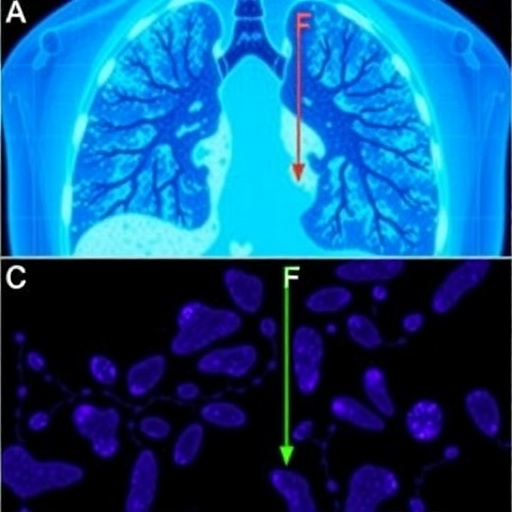
In the intricate world of animal behavior, research has long sought to understand the underlying causes and effects of various actions exhibited by species in their natural habitats. A significant avenue of exploration is the phenomenon of stereotypiesârepetitive, invariant behavior patterns often observed in animals under stress or captivity. A recent review by Hildebrand and ZaleÅny delves into the connection between these stereotypic behaviors, cortisol levels, and their implications for animal welfare, sparking a riveting conversation about the impacts on wildlife and domesticated species alike.
Cortisol, often referred to as the stress hormone, plays a critical role in an organism’s response to stressors. Elevated cortisol levels typically reflect an animal’s state of distress, which can be triggered by various factors including environmental changes, confinement, and even social dynamics. Understanding how these stress responses correlate with maladaptive behaviors such as stereotypies is paramount for improving animal welfare both in the wild and in controlled environments, like zoos and farms.
The review by Hildebrand and ZaleÅny meticulously organizes existing literature surrounding cortisol and abnormal behaviors in animals. It aims not only to unpack the complexities of these interactions but also to provide a foundation for future research aimed at resolving the welfare dilemmas faced by numerous species. By synthesizing findings from various studies, the authors present evidence suggesting that high cortisol levels may indeed contribute to an increase in stereotypic behaviors. However, the review also raises a crucial question: do these behaviors serve any purpose at all, or are they merely byproducts of an unhealthy mental state?
A central focus of the paper is exploring whether stereotypies can help animals cope with stress. Some researchers argue that such behaviors may provide a form of relief or serve as a coping mechanism in environments where the animal feels a loss of control. Animals exhibiting stereotypies might, for instance, channel their pent-up energy or anxiety into these repetitive movements. While this could be seen as beneficial in some contexts, it raises ethical questions about the environments in which these animals are kept.
Yet, the authors highlight the flip side of the argument, indicating that stereotypies can also have harmful consequences. Engaging in these abnormal behaviors can lead to physical injuries or further mental distress, perpetuating a cycle of suffering. This duality challenges observers to reconsider how we interpret animal behaviors that appear puzzling or maladaptive. Are we, as humans, witnessing a cry for help, or is it simply a manifestation of an animalâs struggle to adapt to an unnatural habitat?
The authors navigate the complexities of the animal psychology landscape, bringing to light the various variables that can influence the relationship between cortisol and behaviors. Factors such as age, species-specific traits, and social structures all intertwine to create a multifaceted picture of animal welfare. Yet, the review underscores a critical gap in the current understanding: more nuanced research is necessary to draw concrete conclusions about the effectiveness of stereotypies as stress coping mechanisms.
Hildebrand and ZaleÅny’s review not only sheds light on these significant issues but also urges practitioners and researchers alike to continuously question and evaluate animal management strategies. The implications of their findings resonate beyond academic circles, touching public opinion and policy surrounding animal care in multiple contextsâfrom agricultural practices to wildlife conservation efforts.
Moreover, the authors emphasize the importance of positive intervention strategies. Instead of merely observing and recording behaviors, stakeholders in animal welfare and care are encouraged to implement environmental enrichment techniques. These might include providing diverse stimuli or enhancing habitats with natural elements, thereby allowing animals to exhibit more natural behaviors. The aim is to promote well-being and reduce stress, ultimately leading to lower cortisol levels and a mitigation of stereotypic behaviors.
One cannot overlook the ethical dimensions at play. As our society progresses in its understanding of animal sentience, the conversations fostered by this review challenge us to confront our roles and responsibilities toward non-human inhabitants of our planet. If stereotypies are deemed maladaptive, it pushes us to reassess the environments we create for animals, especially those in captivity.
Bioethics intertwines with behavioral research as advancements are made in understanding animal welfare. Not only do we owe it to animals to ensure their physical well-being, but a growing body of evidence demands that we factor in psychological health as a critical component of care. The intricacies of an animal’s emotional life are still largely uncharted territory, sparking calls for interdisciplinary research that bridges gaps between veterinary science, ethology, psychology, and conservation biology.
Interestingly, these explorations into stereotypies and cortisol levels are not merely academic in nature. Public interest and concern over how animals are kept and treated are at an all-time high, spurred on by social media, documentaries, and advocacy groups. This growing awareness elevates pressure on industries reliant on animal labor or displayâprompting behavioral scientists and animal welfare activists to collaborate to reshape practices in ways that prioritize mental health.
Continued research, as encouraged by the authors, may very well lead to surprising insights. Future studies could explore specific hormonal mechanisms or genetic predispositions that influence how different species experience and respond to stress. Understanding these nuances could open new doors for interventions designed to foster resilience in the face of adversities, whether in zoos, laboratories, or the wild.
In conclusion, the review by Hildebrand and ZaleÅny serves as a valuable contribution to the ongoing conversation concerning animal welfare, stereotypies, and stress behavior. The link between cortisol levels and abnormal behaviors remains an area ripe for exploration, holding profound implications for how we perceive and manage animal care. As we deepen our understanding, we can hope to create a future where animals in every environment lead healthier, more fulfilling lives. This research not only emphasizes the importance of animal welfare but also urges us all to reflect on our role in the lives of the beings with whom we share this planet.
Subject of Research: Link between cortisol levels and abnormal behaviors in animals.
Article Title: Do stereotypies help or harm? Exploring the link between cortisol level and abnormal behaviours in animals: a review.
Article References:
Hildebrand, W.H., ZaleÅny, G. Do stereotypies help or harm? Exploring the link between cortisol level and abnormal behaviours in animals: a review.
Front Zool 22, 20 (2025). https://doi.org/10.1186/s12983-025-00576-0
Image Credits: AI Generated
DOI: 10.1186/s12983-025-00576-0
Keywords: Stereotypies, cortisol levels, animal behavior, animal welfare, stress responses.
Tags: animal welfare and stress responsescortisol and animal behaviorcortisol levels and maladaptive behaviorsenvironmental stressors and animal welfareimpact of captivity on animal behaviorimplications of stress in captive animalsrepetitive behaviors in animalsresearch on animal stereotypiesstereotypies in wildlife and domesticated speciesstress hormone effects on animalsunderstanding animal stress responseswelfare dilemmas in animal care




